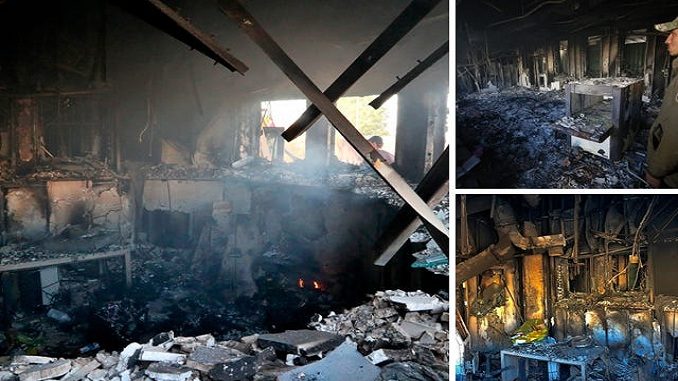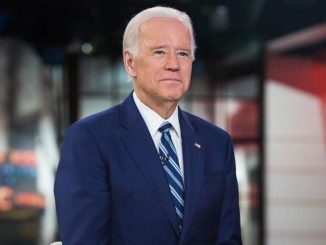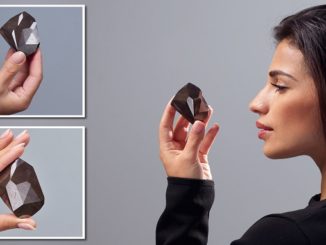
In the videos captured from the attack on the American Embassy in Baghdad on Tuesday, some of the attackers are carrying flags. The distinctive yellow flag picturing a raised fist holding an AK-47 at the center belongs to a group called Kataib Hezbollah, KOSU writes.
Phillip Smyth, fellow at The Washington Institute, a think tank in Washington, said there are different translations for the word Kataib in Arabic, but the group is often called the Hezbollah Brigades. Smyth, who studies Shiite militias, said Kataib Hezbollah is closely connected to Iran, Iraq’s next-door neighbor to the east; and it is one of the country’s most loyal proxies in Iraq.
Kataib Hezbollah, strongly connected to the Lebanese Hezbollah, formed around 2007. It started very small — with only a couple hundred members. Then, slowly, it grew into a much larger, powerful organization, and more recently, it has operated in Syria, Smyth said. It’s just one of many Shiite militia groups in Iraq.
In his Shia Militia Mapping Project, Smyth has documented the activities of Shiite militias in the Middle East. He said there are under 100 unofficial Shiite militia groups in Iraq today.
“Official groups, it’s closer to around … in the 60s range,” he said, adding that the Iranians are firm controllers of a good number of these organizations.
Iran’s influence in Iraq goes way back, Smyth said. In the 1980s, the two countries fought a bloody war, however, since the American invasion in Iraq 2003, Iran has sought to increase its influence in its neighboring country. And it has specifically focused on the Shiite communities.
Ayatollah Khomeini, the leader of Iran’s 1979 Islamic Revolution, saw himself as the leader of all Muslims. He also wanted to export Iran’s revolution to other countries. Khomeini’s legacy continues to this day. In Iraq, the Shiites are a majority of the country’s population. But they suffered greatly during the decades of Saddam Hussein’s rule. Hussein favored the minority Sunni population. So, Shiites in Iraq looked to Iran and its Shiite religious government for support.
Smyth said since the US-led overthrow of Hussein, the Iranians have courted the Shiites in Iraq as their natural allies.
“The Iraqi economy is in shambles,” Smyth pointed out. “There is no social services, there is no other services, there is terrible corruption. And the Iranians often come in offering a lot of money, offering a lot of political influence [and] if you are somebody who is from a poor community, it certainly appeals to you.”
Middle East analyst Hamdi Malik said Iranian-backed militia groups in Iraq work on different levels.
“They have heavy presence in media, they have heavy presence in economic activities of the country, they have seats in the parliament,” Malik said.
Malik adds that Kataib Hezbollah has “a history of disobeying orders from the prime minister’s office during the fight against the Islamic State.”
American troops on the ground witnessed these alliances on a regular basis. Jared Johnson, 38, served two tours in Iraq: from August 2006 to November 2007, and again, from December 2008 through November 2009. He served as an infantryman with the US Army’s 82nd Airborne Division.
Johnson says his platoon knew in that first tour it was dealing with an Iranian-backed militia group because they were the ones that stuck around to fight.
“It was usually higher coordination, more sophisticated weaponry, it was a much bigger deal,” he told The World.
Johnson said he wasn’t familiar with Kataib Hezbollah before this week, but when he heard about the embassy attack in Baghdad, he says, it reminded him of a comment that an Iraqi army sergeant made back in 2009.




Be the first to comment